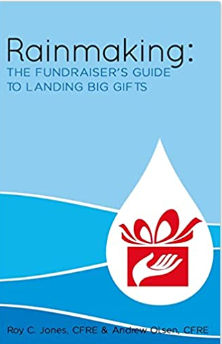In seasons of disruption, it’s easy to feel unsettled and even off-course. External pressures—economic, political, even organizational—can push a nonprofit to react instead of respond. Shifting priorities at the federal level and changes in funding landscapes only add to the uncertainty. But these are the moments when our mission matters most. When clarity is elusive and resources seem scarce, returning to your mission statement is an anchor.
One of my favorite authors, Kendra Adachi, reminds us to “embrace what matters, ditch what doesn’t” (Adachi, 2020). This wisdom feels especially relevant in the nonprofit sector, where the pull toward doing more can distract us from doing what matters most. In uncertain times, the temptation to overcorrect or chase short-term fixes can pull teams away from their purpose. But alignment—true organizational congruence—is where strength lies.
With a background in clinical counseling, I often think of alignment as a state in which a person’s actions, decisions, and relationships consistently reflect their core values and beliefs. It represents internal harmony and intentional living. This concept extends beyond individuals—healthy teams, boards, and organizations also thrive when their goals, behaviors, and culture are grounded in a shared sense of purpose and values.
Mission drift often begins subtly: a new grant opportunity that seems promising, a pet project that doesn’t quite fit, or a crisis that pushes a team into reactive mode. Over time, the cumulative effect of these small shifts can pull a ministry off course. Re-centering requires intentional reflection: Are we doing what we said we would do? Are we becoming who we intended to be?
In a time when donors are rethinking their giving strategies and organizations are facing pressure to innovate quickly, being mission-focused becomes a competitive advantage. A clear and compelling mission provides guidance for decision-making, helps prioritize limited resources, and sustains internal morale. When everyone knows why the organization exists, the “what” and “how” become more adaptable.
Mission-centered leadership also cultivates trust. Donors are increasingly viewing their giving as an investment. They want to know that the organizations they support are grounded and strategic. When you remain tethered to your mission, it signals stability. It shows you’re not just chasing trends but stewarding something enduring.
This is not to say we shouldn’t evolve and grow. Times of disruption can bring necessary pruning and creative reimagining. But we must ask: Does this change bring us closer to our mission or farther away? In pruning, we make space for new growth—not random growth, but mission-aligned, fruit-bearing growth. As Jesus reminds us in John 15:2, “Every branch that does bear fruit he prunes so that it will be even more fruitful.” Pruning isn’t punishment—it’s preparation for greater impact. If you’re feeling the weight of uncertainty in this season, I encourage you to gather your team and read your mission statement aloud. Then, take time to reflect together by asking:
- What have we drifted away from?
- What activities or programs no longer align with our core mission?
- Where are we experiencing mission fatigue or misalignment?
- What strengths can we build on right now?
- What can we do today that best reflects who we are called to be?
Uncertainty doesn’t have to be disorienting. It can be refining.
Reference:
Adachi, K. (2020). The lazy genius way: Embrace what matters, ditch what doesn’t, and get stuff done. WaterBrook.
Fit Fundraising works with nonprofits, large and small, in human services, international relief, advocacy and education. Founder Roy Jones has helped raise more than half a billion dollars over the last decade alone. Ready to elevate your fundraising efforts to new heights? Discover how Fit Fundraising can transform your results. You can reach Roy at rjones@fitfundraising.com.


